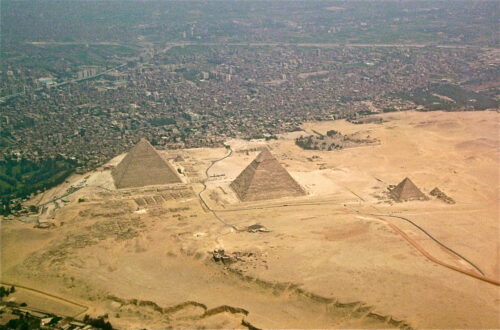
We live in an astonishing period of history. As technology heightens to new levels with accelerating speed, it is vital for today’s engineer to remember the past, focus on the current and prepare for the future.
Like everything in life, we must keep balanced. In current and subsequent articles of this series, I am pursuing the evolution of controls and engineering across the ages with some thoughts about where we have been, where we are going and where it will lead us.
Ancient Engineering and Design in Present-Day India
One ancient example that deserves some attention is the Indus Valley or Harappan Culture. Earliest settlement evidence began around 7,000 BCE and the settlement reached its peak around 2600 BCE.
Engineers during that time did some very astute planning to create dozens of cities with a civilization of over five million people that contained personal and community water wells, fire-baked brick homes and buildings, water supply and bath systems, drainage and sewage systems, documented weights and measures for an elaborate trading system that included wheeled carts, boats and river ships, grain storage systems and irrigation systems.
These marvelous engineering features help us to see the importance of planning, designing, implementing and supporting infrastructure as this civilization thrived for thousands of years.
Changes in climate eventually dried up many of the crucial water sources for these people and the cities were almost completely deserted by 1300 BCE. (Ref-1)

Unknown Answers to Engineering Marvels
Another example would be the great pyramids in Egypt in which it would take volumes to cover the mathematic codes encrypted into their features, astronomical and geographical attributes, as well as how they were built.
But for sake of space and time, lets look at just a tiny fragment of what was achieved there from Eric Dubay’s book “The Atlantean Conspiracy”:
Six million tons of stone, underground tunnels, chambers, corridors, 45/90 degree shafts, pi and phi ratios, golden rectangles and other mathematical inclusions, perfect cardinal alignments, right-angles, astrological considerations and flawless masonry.
How did ancient man the whole world over build these huge magnificent pyramids? They stacked stones so heavy, many of which cannot be lifted into place with the technology and machinery available today.
They quarried these stones from miles away and fitted them together so seamlessly that you can’t fit a blade between them.
Also, in Egypt tens of thousands of diorite bowls have been found with hieroglyphs engraved. Diorite is one of the hardest stones on the planet, harder than iron, yet intricate inscriptions have been made, not through the use of chisels or scraping but some unknown ancient technology.
Whatever it was, was capable of etching lines 1/150th of an inch wide, often in sets of parallel lines separated by a mere 1/30th of an inch.
The same kind of workmanship has been found in vases, urns, and other pottery unearthed at the Pyramid of Zoser. (Ref-2) Graham Hancock says: “There was no technology known to have been available to the Ancient Egyptians capable of achieving such results. Nor, for that matter, would any stone-carver today be able to match them, even if he were working with the best tungsten-carbide tools. The implication, therefore, is that an unknown or secret technology had been put to use in Ancient Egypt.” -Graham Hancock, “Fingerprints of the Gods” (Ref-3)

The First Documented “Closed” Control Loop
While “open loop” water clocks were used the world over as far back as 4000 BCE, the first feedback control device (closed loop) I could find on record was Ctesibius’ water clock in Alexandria around 300 BCE.
This water clock kept time by regulating the water level in a vessel as well as the water flow from that vessel. (Ref-4)

Conclusion:
While this article could go on for volumes, I wished to create a background to a fragment of the magnificent minds and inventions that have paved the way for engineers in our current time period to build upon.
In the next article of the series, we will move to other mechanical control systems as we make our way into recent centuries.
Written by Brandon Cooper
Senior Controls Engineer and Freelance Writer
Have a question? Join our community of pros to take part in the discussion! You'll also find all of our automation courses at TheAutomationSchool.com.
Sponsor and Advertise: Get your product or service in front of our 75K followers while also supporting independent automation journalism by sponsoring or advertising with us! Learn more in our Media Guide here, or contact us using this form.
- Things I’ve Learned Travelling for Work (2) - July 17, 2025
- Things I’ve Learned Travelling for Work (1) - July 10, 2025
- Emulating an Allen-Bradley E3 or E3 Plus - June 30, 2025

References:
- https://www.khanacademy.org/humanities/world-history/world-history-beginnings/ancient-india/a/the-indus-river-valley-civilizations, written by Eman M. Elshaikh, partially adapted from “The Indus River Valley Civilizations”from Boundless World History, “CC BY-SA 4.0”
- Eric Dubay: The Atlantean Conspiracy p. 285
- Graham Hancock, “Fingerprints of the Gods”
- https://en.wikipedia.org/wiki/Control_engineering
Discover more from The Automation Blog
Subscribe to get the latest posts sent to your email.




